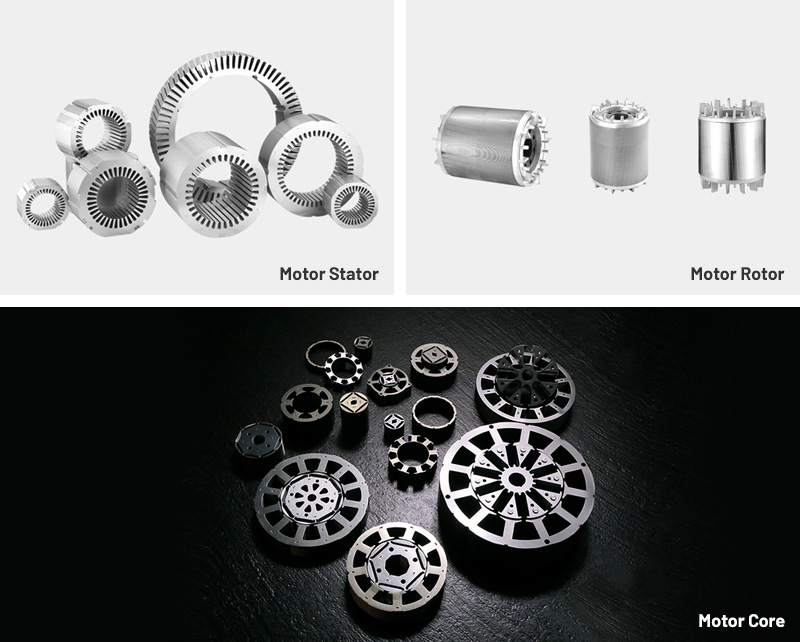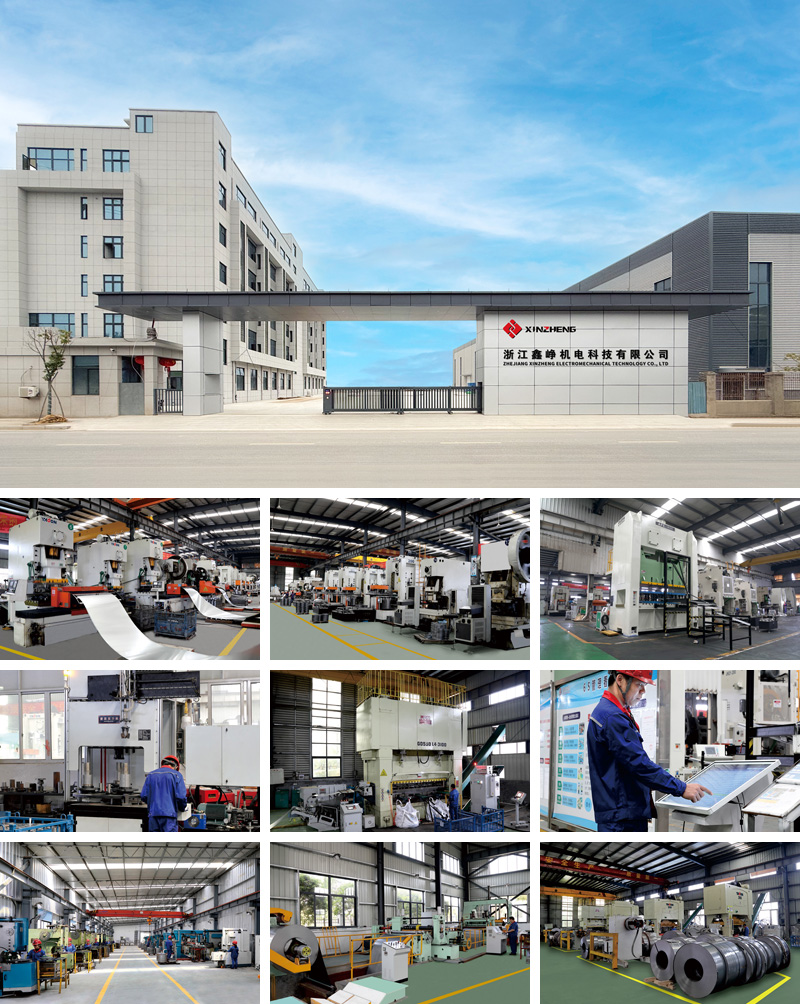Industrial motors remain central to global manufacturing, infrastructure development, and energy systems. As efficiency regulations tighten and automation expands across sectors, the demand for motors capable of stable operation under varying loads and speeds continues to grow. Among these, two-speed and variable-duty motors are widely used in pumps, fans, compressors, textile machinery, and processing equipment where frequent switching between operational modes is required.
The YD2 series industrial motor stator laminations are engineered specifically to support this class of motors. Their design enables smooth performance across dual-speed or multi-speed operating profiles. With industries placing increasing focus on system efficiency, noise reduction, and long service life, the quality and characteristics of stator laminations have become critical evaluation criteria for motor OEMs. High-precision laminations contribute directly to the motor’s magnetic behavior, thermal stability, and long-term reliability.
The stator core serves as the main magnetic pathway that guides the magnetic flux generated by the windings. Laminations in the YD2 series reduce magnetic resistance and help maintain consistent flux distribution in both high- and low-speed modes. This ensures stable torque production and minimized energy loss.
Electrical steel laminations play a primary role in reducing hysteresis and eddy-current loss. Both forms of loss generate heat and lower overall motor efficiency. The YD2 lamination structure uses thin-gauge electrical steel with insulation coatings between layers to reduce circulating currents. Lower core loss supports longer bearing life and improved temperature management.
YD2 motors typically use pole-changing or winding reconfiguration to achieve multiple speeds. The stator lamination geometry—particularly slot design—must accommodate winding layouts that support these transitions. Laminations must maintain dimensional consistency to ensure balanced magnetic performance across speed ranges.
Core alignment, lamination flatness, and slot uniformity all influence motor noise and vibration. The YD2 series stator laminations are engineered to maintain structural stability under repeated switching cycles.
The YD2 series stator laminations are typically manufactured from non-oriented cold-rolled electrical steel. Steel grades such as M400 or M300 are commonly selected based on application requirements.
Key material characteristics include:
High magnetic permeability for efficient flux conduction
Low iron loss to improve temperature stability
Coating adhesion strength to maintain insulation integrity under compression
Good mechanical strength to withstand winding pressure and thermal cycling
Material consistency is essential because it directly impacts magnetic performance in dual-speed operation.
The structure of YD2 stator laminations incorporates several engineering considerations:
Optimized slot shapes to accommodate multi-speed windings
Appropriate back-iron thickness to prevent saturation during high-speed operation
Interlocking or bonding features that maintain alignment during stacking
High stacking factor to enhance magnetic path efficiency
The geometry must allow effective heat dissipation and consistent flux behavior under changing electromagnetic loads.
Electrical steel coils are inspected for thickness uniformity, coating integrity, and magnetic properties. Stable material quality is essential for achieving consistent motor performance.
Stamping dies must maintain tight tolerances, particularly in slot width and tooth geometry. Laser cutting is used for small batches or special profiles but introduces slightly higher burr levels unless post-processed.
Minimizing burr height prevents local heating and insulation damage during stacking or winding. Surface treatment helps maintain coating performance over the motor’s lifespan.
Automated stacking maintains consistent lamination alignment and stack height. YD2 stator cores often use interlocking notches or pressure bonding to enhance mechanical strength.
Dimensional checks, stack flatness, and coating continuity are verified to ensure compatibility with winding equipment and magnetic performance targets.
Batch variations in electrical steel influence magnetic characteristics, temperature rise, and core-loss performance. OEMs increasingly require traceability to ensure compliance with internal standards.
Dual-speed motors demand winding precision. Slot deviations may cause uneven flux distribution, noise, and reduced efficiency.
Proper insulation coating between laminations is vital to suppress eddy currents. Weak coatings increase local heating and reduce efficiency under extended load cycles.
Uneven stacking affects magnetic symmetry, mechanically stresses the windings, and raises vibration levels.
Excessive burr height can erode winding enamel or compromise insulation. High-quality YD2 lamination suppliers keep burr height within minimal tolerances.
Slot shape and depth must support multi-speed winding layouts. Compatibility influences both manufacturing ease and motor performance.
Selecting a supplier for YD2 series motor stator laminations requires assessing both technical capability and production reliability.
Suppliers should provide documented evidence of steel grade origin, production batch numbers, and metallurgical characteristics.
High-quality stamping tools reduce scrap, improve tolerances, and extend operational lifespan. Suppliers with in-house tooling capabilities provide better consistency.
Optical measurement systems, core-loss testers, and burr-detection sensors indicate a supplier’s ability to maintain quality at scale.
Industrial motor production requires predictable, high-volume lamination supply. Suppliers must demonstrate robust logistics and inventory systems.
Because dual-speed motors involve specialized winding configurations, suppliers who collaborate on slot design, material choice, and stacking techniques provide significant engineering value.
Certifications such as ISO 9001, IATF 16949, and ISO 14001 reinforce process stability and environmental responsibility.
Slight deviations alter magnetic circuit symmetry and affect switching performance between speeds. This is a primary challenge in YD2 motor production.
Dual-speed motors operate across different heat-generation profiles. Poor lamination quality increases temperature rise and shortens insulation life.
Stack misalignment or inconsistent tooth geometry contributes to noise and vibration, particularly noticeable during speed transitions.
Complex winding layouts require precise slot dimensions to support automated or semi-automated coil insertion.
Material shortages or inconsistent steel grades introduce variability in motor performance across production batches.
YD2 stator laminations are integral to motors used in:
Industrial ventilation systems where dual-speed control improves energy consumption
Centrifugal and booster pumps in HVAC, water treatment, and chemical processes
Compressors and blowers requiring alternating speed modes
Textile machinery, which relies on frequent speed changes
Conveying and material-handling systems in warehouses and production facilities
General-purpose equipment in manufacturing, agriculture, and building services
The YD2 series design supports motors that run under variable loads, frequent starts, and conditions requiring flexible operational modes.
As IE3 and IE4 standards become more widespread, YD-series motors may evolve to incorporate advanced steel grades and optimized lamination profiles for lower core loss.
Inline dimensional scanning, real-time burr monitoring, and automated defect detection are becoming standard in high-volume lamination factories.
Next-generation electrical steels with lower loss values and enhanced coating durability will enable higher thermal stability and improved motor efficiency.
Engineering efforts are moving toward optimized lamination shapes that reduce mass without compromising magnetic performance.
As manufacturers adopt automated winding and resin-impregnation systems, lamination tolerances will tighten further.
1. What makes YD2 stator laminations different from standard motor laminations?
They are designed to support dual-speed winding configurations and stable flux behavior across multiple operational modes.
2. Which steel grades are typically used for YD2 laminations?
Non-oriented electrical steels such as M400 or M300, selected for balanced magnetic and mechanical performance.
3. How does lamination quality affect motor noise?
Slot accuracy, stack flatness, and burr height all influence magnetic symmetry and mechanical vibration.
4. Why is coating integrity important?
Insulation coatings prevent eddy-current formation between laminations, supporting efficiency and heat control.
5. Which industries rely most heavily on YD2 motors?
HVAC, water treatment, manufacturing automation, textile processing, and general industrial machinery.
Product Category

Comprehensive Strength


Copyright © Zhejiang Xinzheng Electromechanical Technology Co., Ltd. All Rights Reserved.
This website uses cookies to ensure you get the best experience on our website.